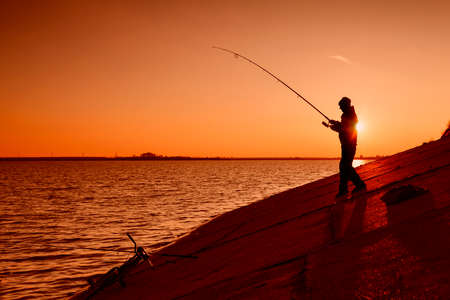1. The Importance of the Right Reel in Big Game Fishing
If you’re an angler chasing big game species like tuna, marlin, or sailfish off the US coast, choosing the right reel isn’t just a detail—it’s a game changer. These powerful fish are known for their speed, strength, and long runs, so your gear needs to keep up. In US waters, from Florida’s offshore hotspots to the canyons of the Northeast, having a high-performance reel can make all the difference between landing a trophy catch and losing it at the last second.
Why High-Performance Matters
Big game fishing puts serious demands on your equipment. The right reel needs to handle heavy lines, deliver smooth and consistent drag, and stand up to corrosive saltwater conditions. When you hook into a bluefin tuna or a feisty marlin, you need a reel that’s built for battle—something reliable that won’t fail when the pressure is on.
Main Reasons to Choose a High-Performance Reel
| Reason | Description |
|---|---|
| Powerful Drag Systems | Helps control hard-fighting fish and prevents line breaks during fast runs. |
| Durability | Resists corrosion from saltwater exposure and handles repeated stress. |
| Smooth Retrieval | Makes it easier to bring in large fish without jerky motion or line tangles. |
| Line Capacity | Holds enough heavy-duty line for deep water battles and long runs typical in US big game fisheries. |
| Precision Engineering | Keeps gears aligned under pressure so you don’t lose power mid-fight. |
Popular Target Species in US Big Game Fishing
| Species | Region | Why You Need High-Performance Gear |
|---|---|---|
| Tuna (Bluefin, Yellowfin) | Northeast, Gulf Coast, West Coast | Known for explosive runs and deep dives—weak reels won’t cut it. |
| Marlin (Blue, White) | Southeast, Gulf Stream, Hawaii | Puts extreme pressure on drags; requires top-notch durability and capacity. |
| Sailfish | Florida Keys, Southeast Atlantic | Aerial acrobatics demand smooth drag and quick response from your reel. |
Selecting a high-performance reel suited to these challenges means more successful trips and memorable catches. With so much on the line—literally—the right gear is your best ally when battling America’s most sought-after saltwater giants.
Key Features to Look for in High-Performance Reels
When it comes to big game fishing in the US, picking the right high-performance reel can make or break your day on the water. American anglers target everything from massive tuna off the East Coast to hard-fighting marlin in the Gulf, so your reel needs to stand up to some serious action. Let’s break down the key features you should focus on when shopping for a reel that can handle the giants.
Drag Systems: Smooth Power Under Pressure
Drag systems are crucial because they control how much resistance a fish feels when it pulls on your line. For big game fishing, you want a drag that’s both strong and smooth, so you don’t risk snapping your line or losing a trophy fish due to jerky movements. Look for reels with carbon fiber drag washers or sealed drag systems—they offer consistent pressure and hold up well over time.
Gear Ratios: Finding the Right Speed
The gear ratio tells you how many times the spool turns with one crank of the handle. For big game, you often need a balance between speed and torque. Higher gear ratios (like 6.2:1) retrieve line quickly, which is great when you’re trying to keep up with fast swimmers. Lower gear ratios (around 4.1:1) give you more cranking power for hauling in heavy fish.
Common Gear Ratios for Big Game Reels
| Gear Ratio | Best Use |
|---|---|
| 4.1:1 – 5.3:1 | Heavy pulling power, ideal for deep sea monsters |
| 6.0:1 – 7.0:1 | Faster line retrieval for pelagic species like tuna |
Line Capacity: Be Ready for Long Runs
Bigger fish mean longer runs, so your reel needs to hold plenty of line—especially heavy braided or mono lines favored by US saltwater anglers. Check the spool specs to make sure it can handle at least 300 yards of your chosen line strength; this gives you room for those epic battles offshore.
Durability and Corrosion Resistance: Built to Last
Saltwater is tough on gear, so durability and corrosion resistance are non-negotiable. Look for reels made from high-quality materials like anodized aluminum or stainless steel. Sealed bearings and frames help keep out salt and sand, extending your reel’s life even if you fish hard all season long.
Material Comparison Table
| Material | Benefits |
|---|---|
| Anodized Aluminum | Lightweight, rust-resistant, strong enough for big game fights |
| Stainless Steel | Tough as nails and stands up well to saltwater environments |
| Graphite/Composite | Lighter weight but less durable under extreme pressure compared to metals |
Other Features Worth Noting
- Handle Design: Oversized handles provide better grip and leverage during intense battles.
- Bearing Count: More ball bearings generally mean smoother operation—look for reels with at least 4-6 quality bearings.
- Easily Accessible Drag Adjustment: Quick tweaks can be lifesavers when a big one takes off fast.
Selecting a high-performance reel isn’t just about one feature—it’s how they all work together under pressure. Keep these factors in mind, and youll be ready to chase America’s biggest fish with confidence!

3. Top Reel Brands and Models Popular with American Anglers
When it comes to big game fishing in the US, choosing the right high-performance reel can make or break your experience. American anglers have clear favorites when it comes to brands and models, trusting companies that consistently deliver strength, reliability, and cutting-edge features. Here’s a look at the most popular reel manufacturers and their flagship models loved by big game enthusiasts across the country.
Leading Manufacturers in the US Big Game Fishing Scene
| Brand | Flagship Model(s) | Why Anglers Trust Them |
|---|---|---|
| Penn | International Series, Slammer IV | Known for rugged durability, powerful drag systems, and decades of proven performance on saltwater giants. |
| Shimano | Twin Power SW, Stella SW | Smooth retrieves, advanced technology, and excellent corrosion resistance make them top choices for offshore action. |
| Daiwa | SALTIGA, BG MQ | Innovative engineering, lightweight yet tough frames, and smooth power perfect for long fights with big fish. |
| Avet | EX Series, HX Series | American-made quality, precision-machined components, and unbeatable stopping power for serious anglers. |
| Okuma | Makaira SEa, Tesoro | High-end features at competitive prices, with great reputation for reliability and customer support. |
What Sets These Brands Apart?
Penn reels are legendary among US anglers for their ability to withstand harsh saltwater environments and tackle trophy-sized fish like tuna and marlin. Shimano’s reels are prized for their ultra-smooth drags and innovative designs that reduce fatigue during long battles. Daiwa’s offerings, especially the SALTIGA line, feature state-of-the-art materials that combine strength with lightness. Avet reels, made in California, are all about raw power and precision engineering—perfect for those chasing records. Finally, Okuma reels bring advanced tech to a wider audience without breaking the bank.
Key Features US Anglers Look For:
- Casting Distance: Long casts help reach schooling fish or distant structure.
- Smooth Drag: Essential for fighting hard-pulling ocean species without line breaks.
- Corrosion Resistance: Saltwater is tough on gear; top brands use special coatings and materials to last longer.
- Line Capacity: Big fish need lots of line—these reels hold plenty for marathon runs.
- User-Friendly Design: Easy maintenance and intuitive controls matter when you’re out on the water all day.
The Takeaway on Top Reel Brands for Big Game Fishing in America
If you want a reel that stands up to giant catches off Florida’s coast or out in the Pacific off California, these leading brands offer models trusted by generations of US anglers. Their focus on quality materials, innovative features, and proven reliability ensures you’ll be ready when that monster bite comes along.
4. Matching Your Reel to US Waters and Target Species
When it comes to big game fishing in the United States, not all reels are created equal. The right reel for chasing bluefin tuna off the East Coast might not be the best choice for hunting yellowtail or marlin on the West Coast. Let’s break down how you can match your high-performance reel to the waters you fish and the species you’re targeting.
East Coast: Atlantic Canyons and Gulf Stream Giants
If youre fishing the deep waters off New Jersey, North Carolina, or down to Florida, you’re likely after species like bluefin tuna, mahi-mahi, or wahoo. Here, anglers prefer heavy-duty lever drag conventional reels with high line capacity and superior drag systems—think 30-80 lb class reels. These reels need to handle long runs and hard fights in deep offshore conditions.
West Coast: Pacific Hotspots
On the West Coast, from Southern California up to Washington, popular targets include yellowfin tuna, dorado, albacore, and even swordfish. High-speed lever drag reels or two-speed models are favored here, as they offer both power for fighting big fish and speed for quick line pickup during fast-paced action. Braided line compatibility is also a must for deep-drop techniques common off San Diego and Los Angeles.
Gulf of Mexico: Oil Rigs and Open Water Battles
The Gulf is famous for its amberjack, snapper, and massive grouper. Anglers here often choose heavy spinning reels or large conventional reels that can handle bottom fishing around structure as well as open water trolling. Corrosion resistance is a key factor given the warm saltwater environment.
Quick Guide: Regional Reel Recommendations
| Region | Popular Species | Recommended Reel Type | Key Features |
|---|---|---|---|
| East Coast (Atlantic) | Bluefin Tuna, Mahi-Mahi, Wahoo | Lever Drag Conventional (30-80 lb class) | High line capacity, strong drag system |
| West Coast (Pacific) | Yellowfin Tuna, Marlin, Swordfish | Two-Speed Lever Drag or High-Speed Conventional | Braided line compatibility, quick retrieve options |
| Gulf of Mexico | Amberjack, Grouper, Snapper | Heavy Spinning or Large Conventional Reels | Corrosion-resistant materials, strong gears |
| Southeast (Florida Keys) | Sailfish, Kingfish, Tarpon | Lighter Spinning Reels or Trolling Setups | Smooth drag system, lightweight design |
Tuning Your Gear by Target Fish Size
Bigger fish mean bigger gear. For monsters like giant tuna or marlin over 200 lbs, opt for 50-130 class reels with max drag ratings of 40 lbs or more. For mid-sized pelagics like mahi-mahi or kingfish under 50 lbs, a 20-30 lb class reel will do the trick and keep things fun but challenging.
Don’t Forget Local Regulations!
No matter where you’re fishing in the US, always check state and federal regulations regarding tackle limits and allowable gear for each species. Some areas have restrictions on reel size or number of rods per angler.
5. Maintenance Tips to Maximize Reel Performance and Lifespan
Why Reel Maintenance Matters for Big Game Anglers
Big game fishing in the US can really put your gear to the test, especially when you’re up against hard-fighting species like tuna, marlin, or tarpon. Saltwater, sand, and even just regular wear and tear can shorten the life of your high-performance reels if you’re not careful. Proper care keeps your reel running smooth, prevents costly breakdowns on the water, and protects your investment for seasons to come.
Best Practices for Cleaning Your Reels
After every trip—especially after hitting saltwater—give your reels a thorough cleaning. Here’s a simple step-by-step guide:
| Step | Action | Tips |
|---|---|---|
| 1 | Rinse with Fresh Water | Use low pressure; avoid blasting water into internal parts. |
| 2 | Wipe Down Exterior | Use a soft cloth to remove salt and grime. |
| 3 | Remove Spool (if possible) | This lets you clean underneath and around key components. |
| 4 | Dab Dry | Towel dry all parts to prevent rust. |
| 5 | Inspect for Damage | Look for signs of corrosion or wear before next use. |
Lubrication: Keeping Things Running Smoothly
Lubricating your reel isn’t just about smooth casts—it also helps guard against saltwater corrosion. Stick to quality reel oils and greases designed for fishing gear. Here’s how often you should lubricate:
| Frequency | What to Lubricate |
|---|---|
| After Every Few Trips (Saltwater) | Bail arm, handle knobs, line roller bearings, main shaft (light oil) |
| Every Few Months/Heavy Use Seasonally | Main gears and drag washers (specialty grease) |
Avoid over-lubricating—too much oil or grease can attract dirt and cause more harm than good.
The Right Way to Store Your Reels Between Adventures
Proper storage is key to extending the life of your big game reels. Here’s what US anglers should keep in mind:
- Avoid Humidity: Store reels in a cool, dry place—never leave them in a damp garage or trunk.
- Loosen the Drag: Back off the drag system before storing to prevent compression of drag washers.
- Covers Help: Use reel covers or bags to shield from dust and accidental knocks.
Troubleshooting Common Issues After Saltwater Trips
- If you notice stiff operation, rinse again and check for hidden salt deposits around moving parts.
- If there’s visible corrosion, gently remove it with a toothbrush dipped in vinegar solution—then re-lubricate.
A Little Maintenance Goes a Long Way!
Treating your high-performance big game reels right ensures they’ll perform at their best when that trophy catch hits. A few simple steps after each trip will help you fish confidently all season long.


